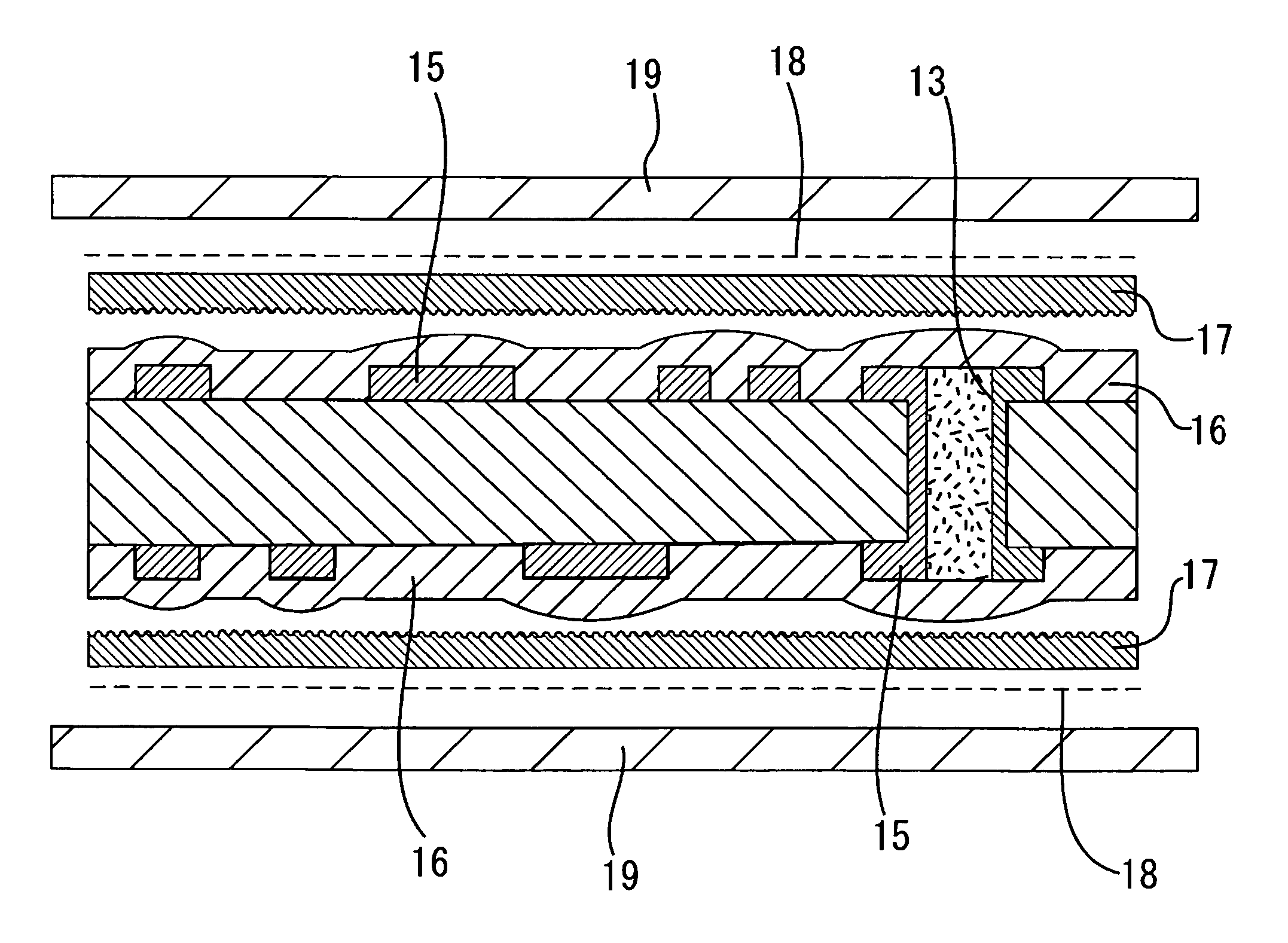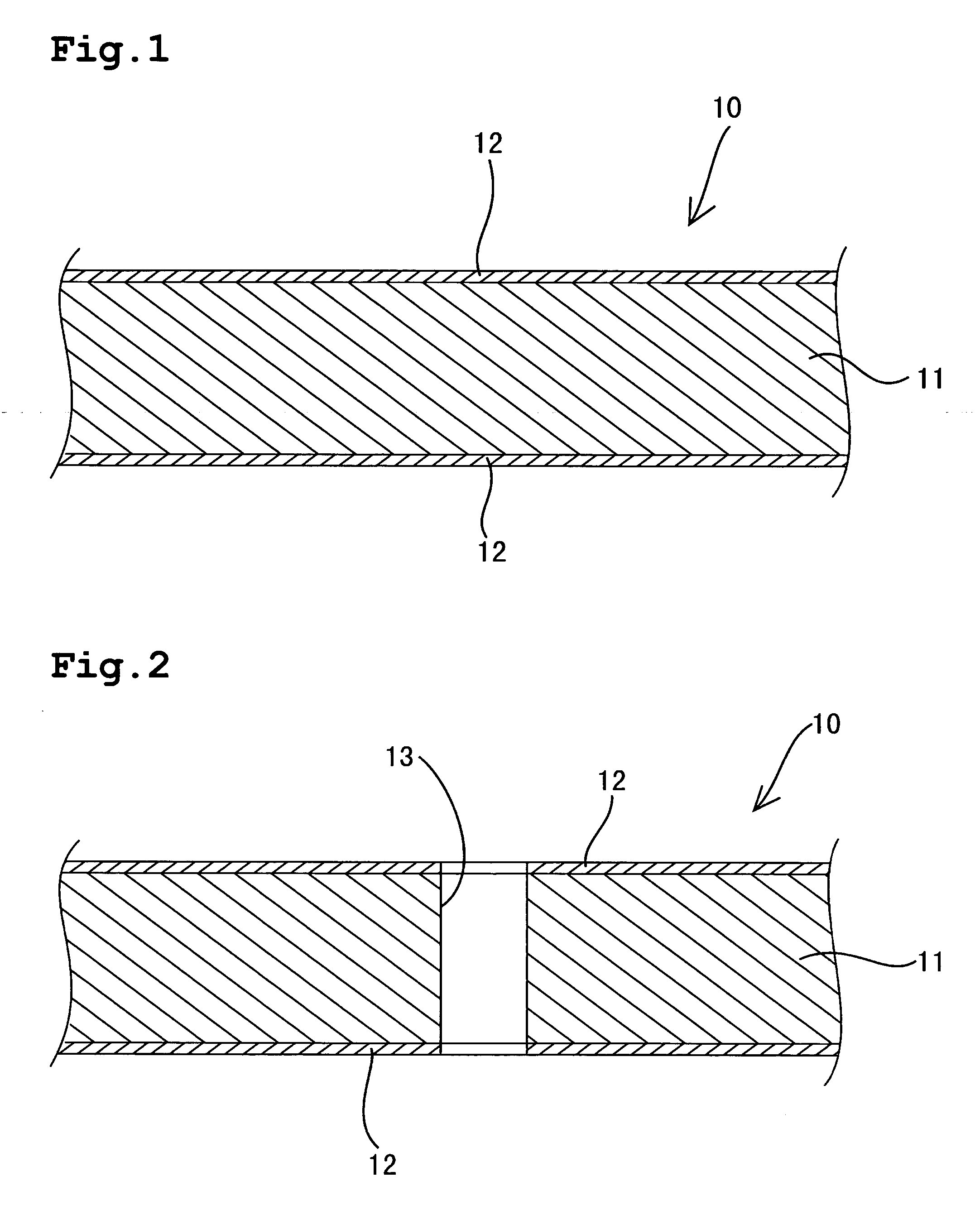Method for manufacturing printed wiring board
a printing method and wiring board technology, applied in the direction of printed circuit assembling, resistive material coating, non-metallic protective coating application, etc., can solve the problems of air bubbles, air voids to be produced air in the resin layer, etc., to facilitate the spreading of resin, easy to remove, and easy to polish
- Summary
- Abstract
- Description
- Claims
- Application Information
AI Technical Summary
Benefits of technology
Problems solved by technology
Method used
Image
Examples
Embodiment Construction
[0027] In the present embodiment, as shown in FIG. 1, a copper clad laminated board 10 with copper foils 12 adhered to both sides of a glass epoxy substrate 11 having a thickness of 100 to 3,000 μm is used as a base material. Boring through the copper clad laminated board 10 at required positions forms the through holes 13 (see FIG. 2). Chemical plating and electrolytic plating are performed in order to form the copper plated layers 14 upon the entire surface area, including the inner peripheral face of the through holes 13, so as to make the thickness of the conductor layer on the surface of the substrate approach approximately 20 μm (see FIG. 3). A resin then fills in the through holes 13 and is cured. Polishing flattens the resin projected to the surface of the substrate. Circuit patterns 15 are then formed on the smoothed substrate by a known photo-etching method (see FIG. 4).
[0028] As shown in FIG. 5, a liquid thermosetting epoxy resin is then applied to the wiring board by e....
PUM
| Property | Measurement | Unit |
|---|---|---|
| temperature | aaaaa | aaaaa |
| thickness | aaaaa | aaaaa |
| thickness | aaaaa | aaaaa |
Abstract
Description
Claims
Application Information
 Login to View More
Login to View More - R&D
- Intellectual Property
- Life Sciences
- Materials
- Tech Scout
- Unparalleled Data Quality
- Higher Quality Content
- 60% Fewer Hallucinations
Browse by: Latest US Patents, China's latest patents, Technical Efficacy Thesaurus, Application Domain, Technology Topic, Popular Technical Reports.
© 2025 PatSnap. All rights reserved.Legal|Privacy policy|Modern Slavery Act Transparency Statement|Sitemap|About US| Contact US: help@patsnap.com



